Getting More Out of Your Wardrobe

In case you missed the news, Americans are consuming clothes at a higher rate than ever. The volume of clothing that we throw away has doubled in the past 20 years, from 7 million tons to 14 million tons, with only about 15% of clothing waste being reused or recycled.
Part of this consumption increase is due to the fast fashion industry. Retail providers are constantly stocking their shelves with new designs (sometimes even multiple times a week) that are priced at extremely low costs, making it hard for consumers to resist.
Wasteful consumption is no longer an option in the current global warming climate reality. The time has come for us to change the way we think about our clothing habits. Here are a few ideas on how to look at your wardrobe and get more out of what you wear.
Clothing
1. Solar or Air Drying
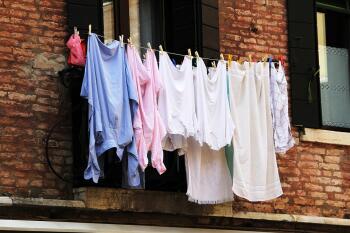 Drying your clothes in the dryer can take a huge toll on them. When possible, hang your clothes to dry, especially delicate items that can be easily damaged by the heat of the dryer. A simple low-tech solar dryer, such as a clothes line, can help you save large amounts of energy. And it will give your clothes longer life.
Drying your clothes in the dryer can take a huge toll on them. When possible, hang your clothes to dry, especially delicate items that can be easily damaged by the heat of the dryer. A simple low-tech solar dryer, such as a clothes line, can help you save large amounts of energy. And it will give your clothes longer life.
If it's not possible to hang your clothes to dry, use the cool setting on the dryer. The cool setting is less damaging to your clothes and, likewise, also an energy saver.
2. Quality Matters
The longer your clothes last, the less frequently you'll have to buy new ones. When shopping for new clothes there are things you can look for to identify high quality compared to lower quality.
In most cases, you want to stay away from thinner fabrics, unless the item of clothing is supposed to be thin (i.e., summer clothing). High quality jeans tend to be made from a strong, heavier weight of denim and you should be able to feel a difference when comparing jeans made of heavy denim and light denim.
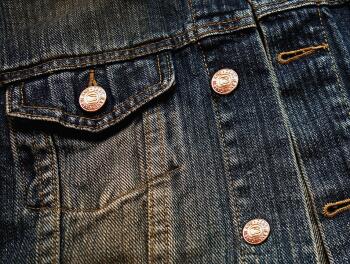
You'll also want to look for durable stitching. You can test the stitching by gently stretching the piece of clothing near the seams. If you can see or hear the threads pulling apart, that's typically a sign that the product is low quality.
When dealing with cotton, fabric made from long cotton fibers is considered to be higher quality than fabrics made from shorter fibers. This is because longer fibers can be spun into finer yarn and finer yarn can be more tightly bound, resulting in stronger and more durable fabric. You can tell if a cotton garment was made with long fibers by touching it, it should feel soft on the skin. If it isn't soft, more than likely it was made from short fibers and won't be as durable in the long run. It also should not be transparent. If you hold the item up to a light and it lets a lot of light through, that is a sign that it isn't very dense and won't be durable.
3. Don't Wait to Wash, Don't Over Wash
Many people are unaware that when dirty clothes are left in the hamper, the bacteria associated with the dirt and stains begin to destroy the fibers of your clothing and can transfer onto other clothes in your hamper, breaking them down as well. Not waiting too long to wash your clothes is thus a way to help make them last longer.
At the same time, washing your clothes too often wears them down, so try to minimize the amount of times you wash items. We all have that favorite sweater we love to wear, but the next time you can't decide what to wear, weigh out all of your options before running to the "go-to sweater."
4. Avoid Dry Cleaning
Avoid buying clothes that require dry cleaning. The chemicals used in the dry cleaning process can not only be damaging to your clothing (when done excessively), but they are also hazardous to your health and the environment.
One of the main chemicals used at the dry cleaners is perchloroethylene (also known as "perc"), which is classified by the U.S. Environmental Protection Agency as a likely human carcinogen, a substance that is may be involved in causing cancer. Perc enters the bloodstream through respiration or skin absorption and is also released into to the air and water. This chemical is being phased out and should no longer be in use by 2020.
In the past, some cleaners have tried to promote "organic" dry cleaning services, and had hung signs in their windows advertising that service feature. At first blush, this may sound like a good idea from an environmental standpoint, as anything organic is good, right? Wrong. The scientific (and not popular) definition of "organic" means any compound that contains carbon. Dry cleaning processes use carbon-containing organic solvents such as perc, so yes an "organic" process is technically being used at dry cleaners. However, the reason you will never find bottles of "organic" perc at your local natural food store is because it is toxic.
If this all sounds confusing, take heart that there is a process some cleaners use that is more environmentally friendly. It is called wet cleaning or the liquid CO2 method, which is an entirely chemical-free method. Ask to see if your local shop uses it.
Also, an alternative to dry cleaning is to steam clean your clothes at home with a fabric steamer or even in the bathroom during a hot shower.
5. DIY Clothing Hacks
Before recycling the clothes you don't wear anymore, try to find DIY transformations to revamp and give them new life.
There are many places online you can look to get ideas for DIY clothing projects. For just a few simple ideas, visit Cute DIY Projects.
6. Store Garments Correctly
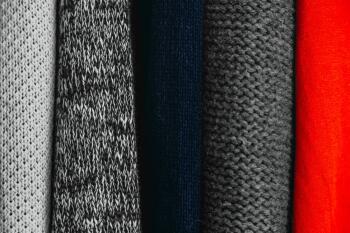 Believe it or not, there is a specific approach you should follow when it comes to the way you store garments based on the material they're made out of. Knit, wool, and cashmere sweaters will stretch when they're hung so it's best to always fold them so they keep their shape. Dresses, skirts, and dress pants should be hung so that they do not develop creases. This will save you from having to iron your clothes or put them in the dryer to de-wrinkle them, which saves energy.
Believe it or not, there is a specific approach you should follow when it comes to the way you store garments based on the material they're made out of. Knit, wool, and cashmere sweaters will stretch when they're hung so it's best to always fold them so they keep their shape. Dresses, skirts, and dress pants should be hung so that they do not develop creases. This will save you from having to iron your clothes or put them in the dryer to de-wrinkle them, which saves energy.
It's best to organize your closet so that you can easily see everything on display. This will help you keep track of what you have and will help to avoid the purchase of items of the same style, color, etc.
Shoes
Gone are the days of taking your worn out shoes to a shoemaker and having them repaired. Sadly, only an estimated 4,300 shoe repair companies exist today, compared to over 100,000 that existed in the 1930s.
The fast fashion industry today is dominated by products, including shoes, that are poorly constructed and have a short life expectancy, thus cutting costs, which appeals to the consumer's desire for a bargain. By the time the product falls apart, the newest trendy shoes have arrived.
But, just like clothing, there are extra measures that can be taken to ensure that your shoes stay in shape and don't have to be replaced often.
1. Shoe Maintenance
Shoe maintenance is an important part of making them last. There are preventive maintenance steps that you can take to ensure that the quality of your shoe lasts longer.
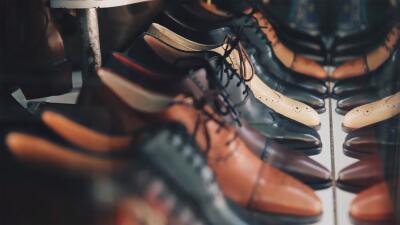
When you first purchase a pair of shoes, waterproof them. When shoes get wet, it can not only cause them to develop an odor but, in the case of leather especially, ruin them altogether by causing the material to breakdown. By applying waterproofing (available in a waxy polish or spray), you can prevent this from happening.
Before you throw worn shoes away see if you have a repair shop nearby. There are also repairs that can be done to your shoes to restore them to their original condition. These repairs can include replacing soles to make the shoe last longer, fix broken heels, restore the original color of the shoe, replace or repair zippers, and many more.
As mentioned previously, the repair industry is one that is diminishing quickly so by having your shoes repaired, you are doing much more than just a favor for yourself; it wil help keep local business.
2. Storage is Important
Like clothing, the storage of your shoes is also an important factor in how long they will last. You want to keep your shoes away from direct sunlight, moisture, and heat because all of these things can cause damage to them. The best place to store them is in a covered, cool, and dry place.
A shoe tree will help shoes to keep their shape. It's a great idea to invest in one of these, especially for leather and tennis shoes, which tend to lose their shape rather quickly.
3. Fresh Laces
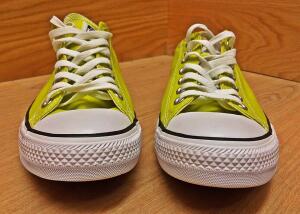 A pair of fresh laces can also make all the difference on a pair of boots or tennis shoes. They are not too expensive and you'd be surprised the effect that a pair of new laces can have on an old or worn out pair of shoes.
A pair of fresh laces can also make all the difference on a pair of boots or tennis shoes. They are not too expensive and you'd be surprised the effect that a pair of new laces can have on an old or worn out pair of shoes.
Remember to Always Recycle
After trying your best to extend your wardrobe, remember to always donate what you no longer can or want to wear, whether it is with Planet Aid or another local textile reuse and recycling organization.
